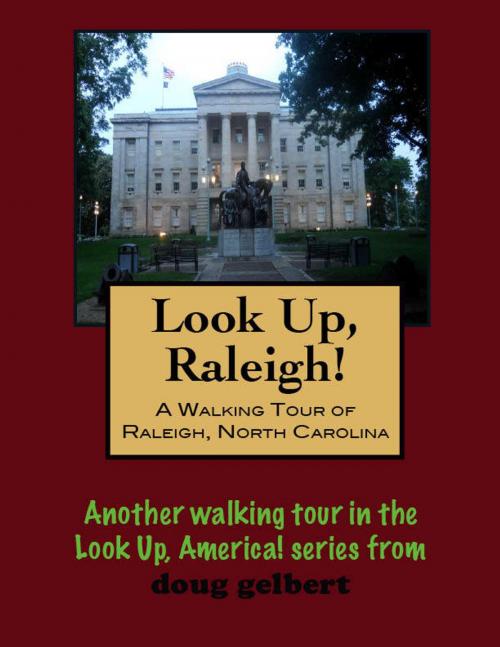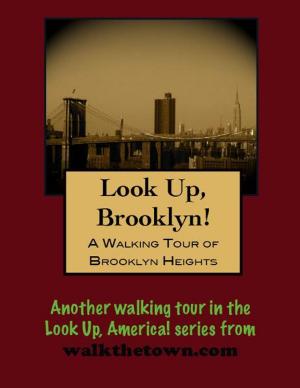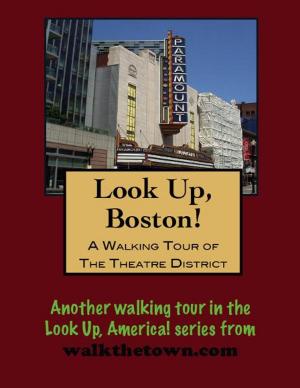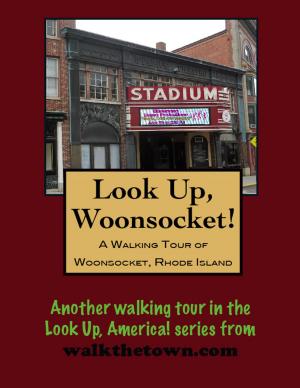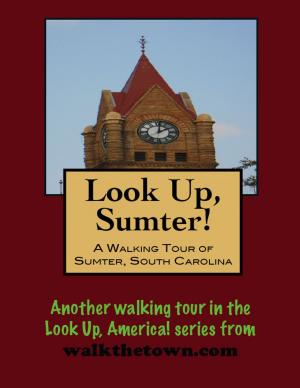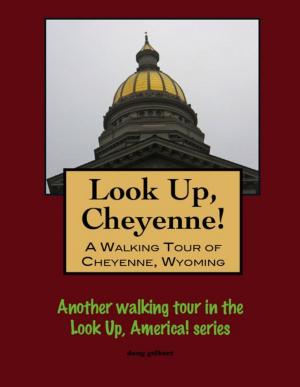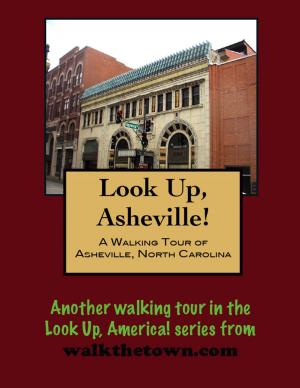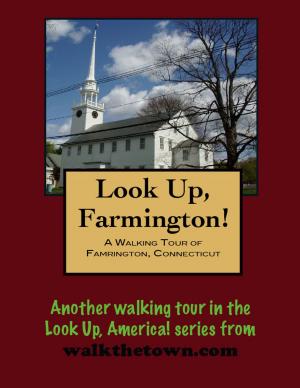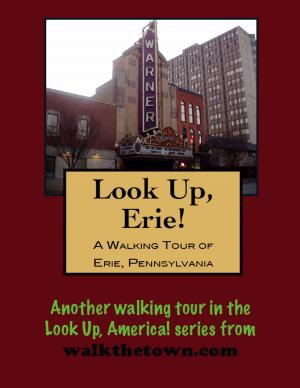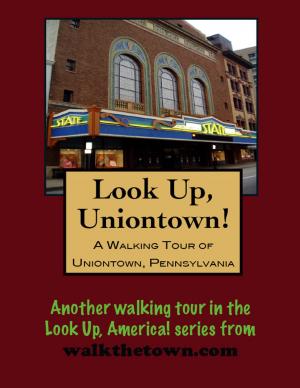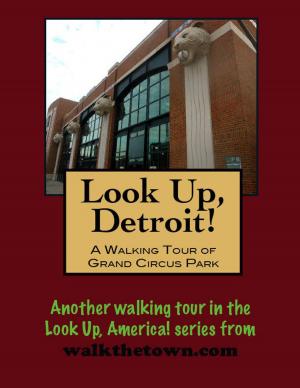| Author: | Doug Gelbert | ISBN: | 9781458171030 |
| Publisher: | Doug Gelbert | Publication: | May 30, 2011 |
| Imprint: | Smashwords Edition | Language: | English |
| Author: | Doug Gelbert |
| ISBN: | 9781458171030 |
| Publisher: | Doug Gelbert |
| Publication: | May 30, 2011 |
| Imprint: | Smashwords Edition |
| Language: | English |
There is no better way to see America than on foot. And there is no better way to appreciate what you are looking at than with a walking tour. Whether you are preparing for a road trip or just out to look at your own town in a new way, a downloadable walking tour is ready to explore when you are.
Each walking tour describes historical and architectural landmarks and provides pictures to help out when those pesky street addresses are missing. Every tour also includes a quick primer on identifying architectural styles seen on American streets.
Raleigh is a member of a very exclusive club: American cities that were founded and planned specifically to serve as a state capital. At the State Convention in 1788 the legislators dismissed the pleas of established towns and instead set out to find a central location for an "unalterable seat of government." The commissioners headed out to find that perfect location with only one directive - make sure the site is within 16 kilometers of Isaac Hunter's Tavern, a popular stopping point for the state politicos. Hunter's land was among 17 tracts inspected but in the end it was 1,000 acres of Joel Lane's land that was purchased for £1,378. Tradition holds that Lane's excellent punch played a part in the transaction.
The new town picked up its name from Sir Walter Raleigh sponsor of the ill-fated "Lost Colony" on Roanoke Island 200 years before. At the same time Raleigh was made the county seat of the newly formed Wake County so there was going to be a lot of governing going on here. In 1792 William Christmas laid out the town grid with a central square that would contain the statehouse and four quadrants anchored by squares named for the firs three North Carolina governors and Attorney General Alfred Moore. By 1794 the brick statehouse was ready and the new government town was off and running.
For most of its early existence there was not much more to Raleigh than government. The population in 1840 was actually less than in 1820. That year the railroad arrived which provided a small bump to the economy but there was no boom. The Civil War had little impact on the town and Reconstruction kept industry stagnant another decade. It would not be until 1890 that the population of Raleigh would reach 10,000.
By that time another industry had taken hold in Raleigh: education. The Raleigh Academy had been founded back in 1801 on Burke Square and the first college, Peace Institute had been founded in 1857 but both institutions sputtered. Peace Institute, for instance, would not open until 1872. Three years later, Shaw University, the South's first African-American college which began classes in 1865, was chartered. In 1887 the North Carolina College of Agriculture and Mechanic Arts, now known as North Carolina State University, was founded as a land-grant college. And in 1891 the Baptist Women's College, now known as Meredith College, opened its doors.
By the turn of the 20th century, the students were out-populating the legislators.
One hundred years further on, the government for which Raleigh was founded is almost incidental. Raleigh is one of the fastest growing cities in the country with a population over 400,000; it is the tenth largest state capital in America. Its industrial base includes banking/financial services; electrical, medical, electronic and telecommunications equipment; clothing and apparel; food processing; paper products; and pharmaceuticals. The city is a major retail shipping point for eastern North Carolina and a wholesale distributing point for the grocery industry.
On our walking tour we'll see a handful of government buildings early but after that you will probably forget that you are exploring a city whose only reason for being was to be a capital...
There is no better way to see America than on foot. And there is no better way to appreciate what you are looking at than with a walking tour. Whether you are preparing for a road trip or just out to look at your own town in a new way, a downloadable walking tour is ready to explore when you are.
Each walking tour describes historical and architectural landmarks and provides pictures to help out when those pesky street addresses are missing. Every tour also includes a quick primer on identifying architectural styles seen on American streets.
Raleigh is a member of a very exclusive club: American cities that were founded and planned specifically to serve as a state capital. At the State Convention in 1788 the legislators dismissed the pleas of established towns and instead set out to find a central location for an "unalterable seat of government." The commissioners headed out to find that perfect location with only one directive - make sure the site is within 16 kilometers of Isaac Hunter's Tavern, a popular stopping point for the state politicos. Hunter's land was among 17 tracts inspected but in the end it was 1,000 acres of Joel Lane's land that was purchased for £1,378. Tradition holds that Lane's excellent punch played a part in the transaction.
The new town picked up its name from Sir Walter Raleigh sponsor of the ill-fated "Lost Colony" on Roanoke Island 200 years before. At the same time Raleigh was made the county seat of the newly formed Wake County so there was going to be a lot of governing going on here. In 1792 William Christmas laid out the town grid with a central square that would contain the statehouse and four quadrants anchored by squares named for the firs three North Carolina governors and Attorney General Alfred Moore. By 1794 the brick statehouse was ready and the new government town was off and running.
For most of its early existence there was not much more to Raleigh than government. The population in 1840 was actually less than in 1820. That year the railroad arrived which provided a small bump to the economy but there was no boom. The Civil War had little impact on the town and Reconstruction kept industry stagnant another decade. It would not be until 1890 that the population of Raleigh would reach 10,000.
By that time another industry had taken hold in Raleigh: education. The Raleigh Academy had been founded back in 1801 on Burke Square and the first college, Peace Institute had been founded in 1857 but both institutions sputtered. Peace Institute, for instance, would not open until 1872. Three years later, Shaw University, the South's first African-American college which began classes in 1865, was chartered. In 1887 the North Carolina College of Agriculture and Mechanic Arts, now known as North Carolina State University, was founded as a land-grant college. And in 1891 the Baptist Women's College, now known as Meredith College, opened its doors.
By the turn of the 20th century, the students were out-populating the legislators.
One hundred years further on, the government for which Raleigh was founded is almost incidental. Raleigh is one of the fastest growing cities in the country with a population over 400,000; it is the tenth largest state capital in America. Its industrial base includes banking/financial services; electrical, medical, electronic and telecommunications equipment; clothing and apparel; food processing; paper products; and pharmaceuticals. The city is a major retail shipping point for eastern North Carolina and a wholesale distributing point for the grocery industry.
On our walking tour we'll see a handful of government buildings early but after that you will probably forget that you are exploring a city whose only reason for being was to be a capital...
